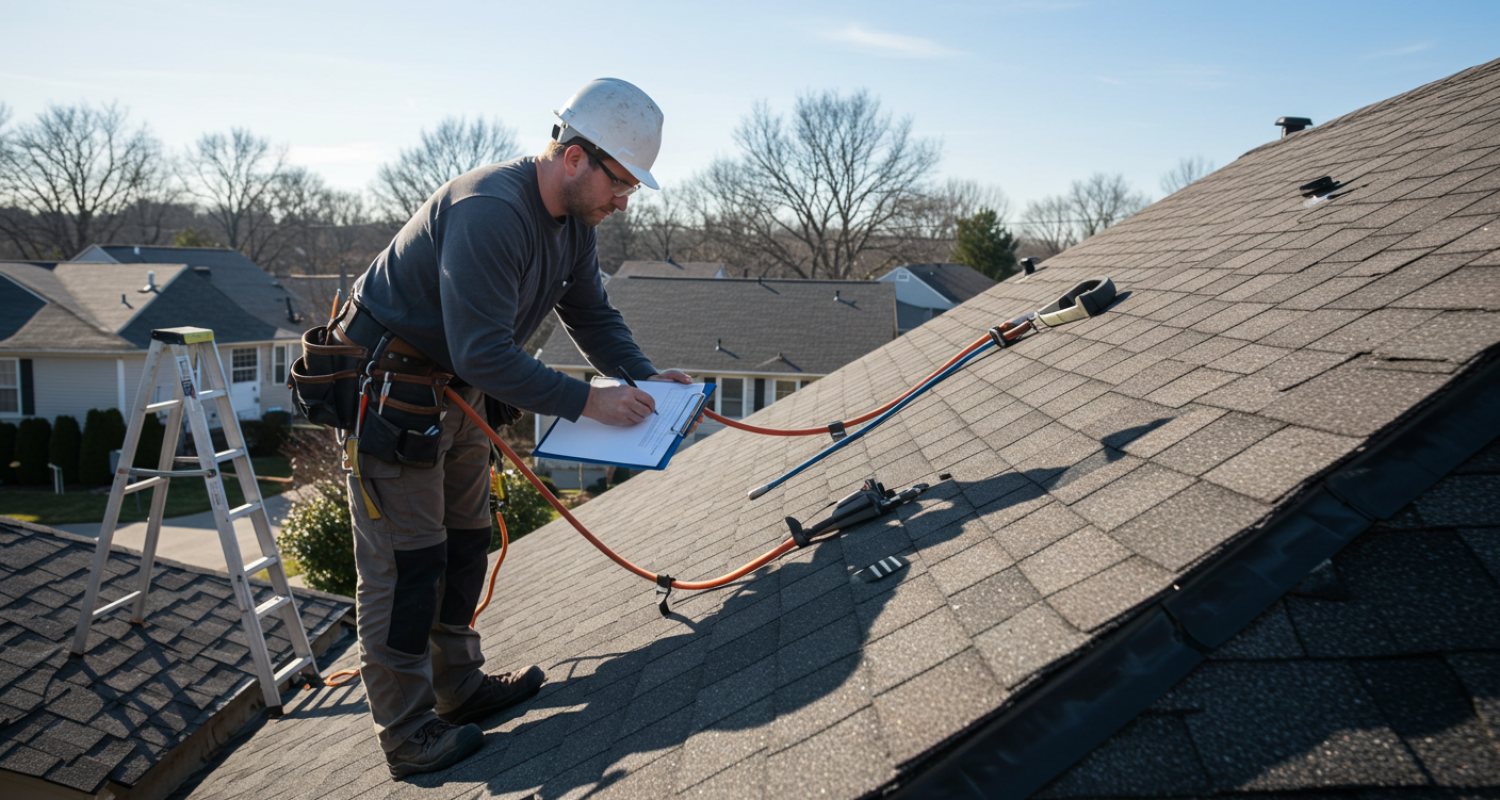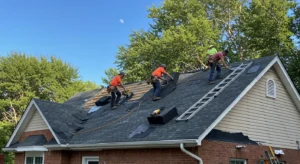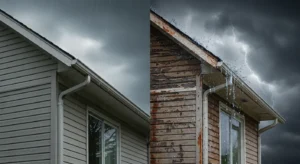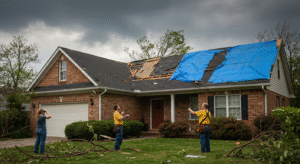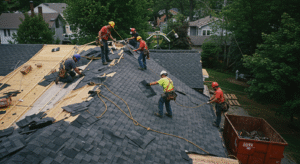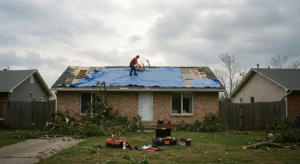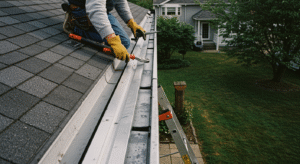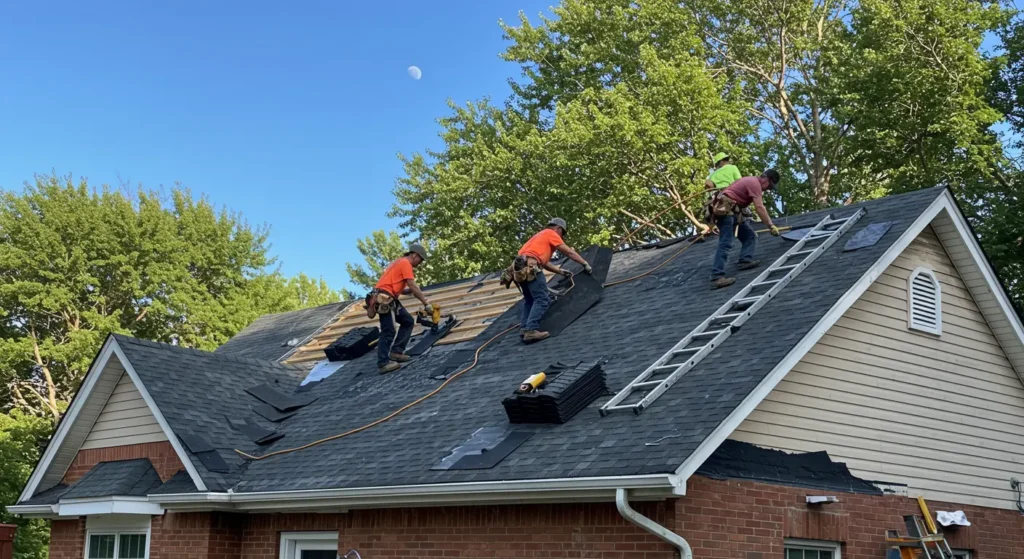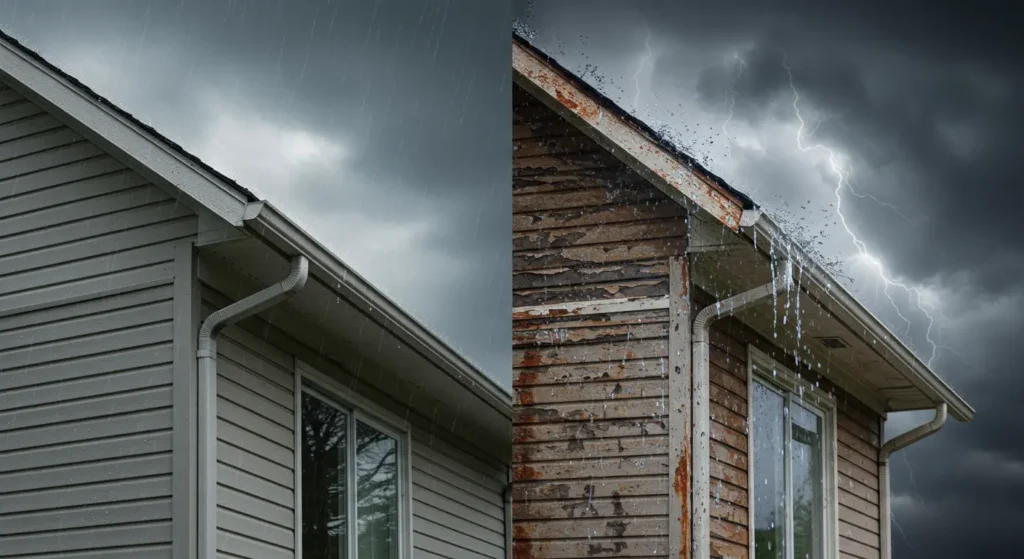Your roof is one of the most important structures protecting your home — and yet, it’s often one of the most overlooked. Routine roof care doesn’t just help you avoid leaks and structural damage; it can also add years to your roof’s life. That’s why having a roofing maintenance checklist is essential for every homeowner.
At Richard Miller Construction LLC, we know that staying ahead of damage is the key to protecting your property value and avoiding expensive surprises. This guide walks you through 10 critical maintenance tasks that can keep your roof safe, secure, and long-lasting — with insights into seasonal roof maintenance, roof inspection tips, and more.
Why You Need a Roofing Maintenance Checklist
Neglecting your roof can lead to extensive water damage, costly repairs, and even premature roof replacement. A maintenance checklist keeps you proactive instead of reactive.
Here’s how it helps:
- Saves Money: Small repairs prevent bigger issues.
- Protects Your Home: Stops water from leaking into walls, ceilings, and insulation.
- Increases Lifespan: Well-maintained roofs last years longer.
- Improves Efficiency: Better insulation and ventilation reduce heating/cooling costs.
- Supports Property Value: A solid roof boosts resale value and curb appeal.
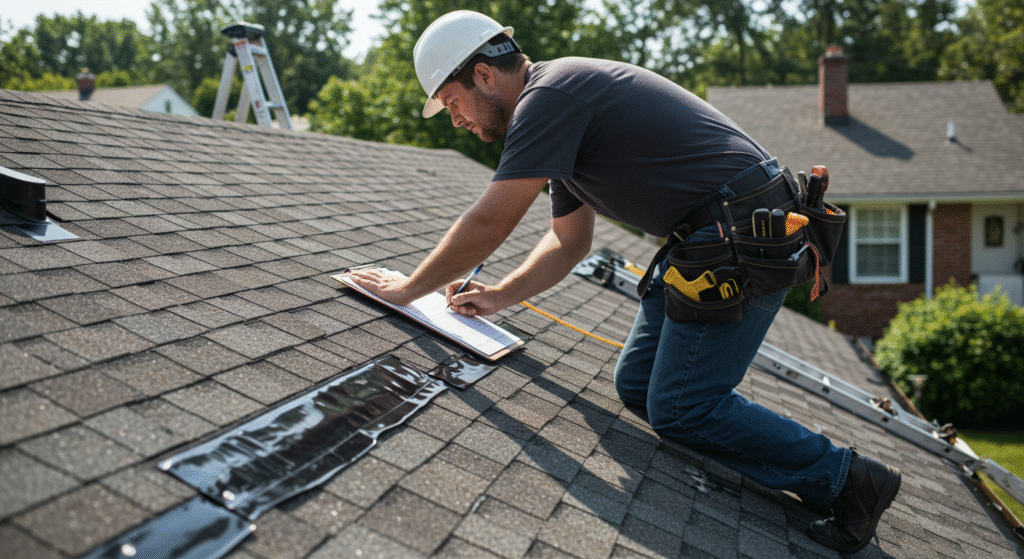
Roofing Maintenance Checklist – 10 Key Tasks
These are the most important steps every homeowner should follow as part of a consistent roofing care routine:
1. Perform a Detailed Roof Shingle Check
Roof shingles are your home’s first layer of protection against the elements. Take time to look for any that are warped, cracked, faded, or missing entirely.
Why It’s Important: These visible flaws often indicate the early stages of roof damage. Ignoring them can result in leaks, mold growth, and costly repairs down the line.
Helpful Tip: Use binoculars from the ground to avoid climbing, or book a certified roof inspection for a thorough evaluation.
2. Unclog Gutters and Downspouts
When gutters are packed with leaves, dirt, or twigs, water can’t drain properly and may overflow onto your roof or seep into your siding.
Why It’s Important: Clean gutters help direct water safely away from your roof and foundation, preventing water damage and erosion.
Helpful Tip: Clean your gutters twice a year—especially after fall and spring—or more often if nearby trees regularly shed leaves and debris.
3. Check Flashing and Seals
Flashing around chimneys, vents, and skylights needs to stay watertight.
Why It Matters: Damaged or missing flashing can let water seep under your shingles, leading to rot and mold.
Tip: Check flashing for rust, cracks, or separation. Reseal with roofing caulk or replace as needed.
4. Trim Overhanging Tree Branches
Trees provide shade but also drop debris and create access points for pests.
Why It Matters: Branches can rub against your roof or fall during storms, causing major damage.
Tip: Keep branches trimmed 6–10 feet away from your roofline for safety and longevity.
5. Remove Moss, Algae, and Debris
Moss and algae retain moisture, which can cause shingles to deteriorate over time.
Why It Matters: Organic growth can damage roofing materials and cause premature aging.
Tip: Use a roof-safe moss remover or install copper/zinc strips to discourage growth.
6. Check the Attic and Ceiling
Sometimes, the first signs of a roof issue are found inside the house.
Why It Matters: Water stains, mold, or musty smells in the attic signal a hidden leak.
Tip: Shine a flashlight in your attic and inspect for damp insulation or light filtering through.
7. Inspect Ventilation Systems
Good airflow keeps your attic dry and your roof healthy.
Why It Matters: Poor ventilation traps moisture and heat, damaging shingles and reducing energy efficiency.
Tip: Check for blocked soffit vents and make sure ridge vents are clear of debris.
8. Secure Roof Fixtures
Loose satellite dishes, solar panels, or HVAC equipment can cause leaks or blow away in high winds.
Why It Matters: These devices penetrate the roof and need to be sealed properly to avoid leaks.
Tip: Tighten mounts and check seals. Reapply roofing cement around hardware if needed.
9. Clear Debris from the Roof Surface
Leaves, branches, and trash on the roof trap moisture and can clog gutters.
Why It Matters: Debris causes unnecessary wear and tear on your roofing material.
Tip: Safely remove debris with a leaf blower or soft broom — never a pressure washer.
10. Keep a Roof Maintenance Log
Track inspections, maintenance, repairs, and costs.
Why It Matters: A documented history is helpful for warranties, insurance claims, and when selling your home.
Tip: Take dated photos and notes each time you perform or schedule maintenance.
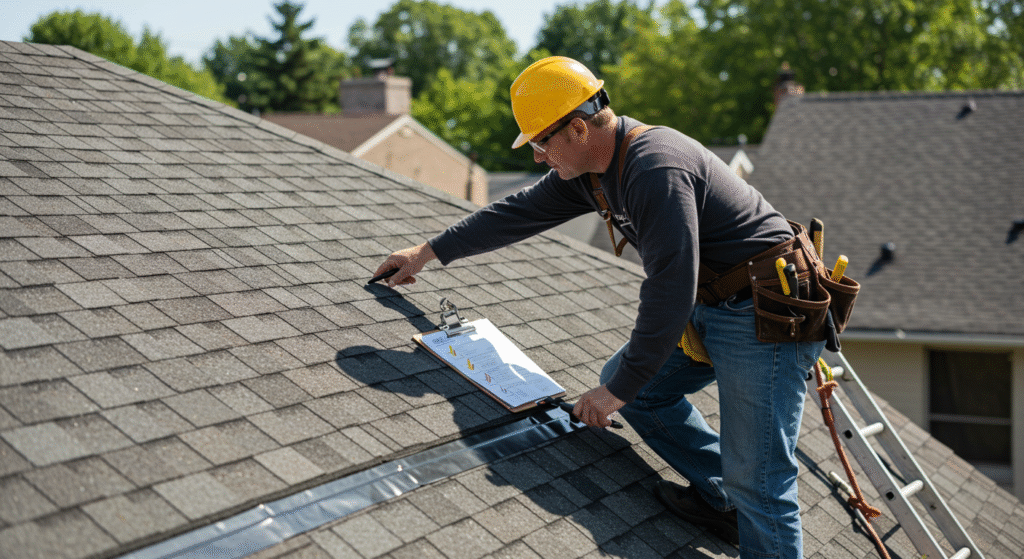
When to Perform Roof Maintenance
Roof maintenance isn’t just a once-a-year task — it’s a seasonal roof maintenance responsibility. Here’s when to take action:
Spring
- Inspect for damage caused by snow, ice, and wind.
- Clean gutters and check for signs of algae or moss.
- Prepare for upcoming rainstorms.
Summer
- Look for sun damage, curling shingles, and moisture buildup in the attic.
- Treat and remove any visible moss.
- Ensure your ventilation system is functioning properly.
Fall
- Clear away fallen leaves and debris.
- Trim overhanging branches before winter storms arrive.
- Reseal flashing and replace worn shingles.
Winter
- Watch for ice dams and heavy snow buildup.
- Perform visual checks from inside (attic and ceilings).
- Avoid walking on the roof — schedule professional help if needed.
DIY vs. Professional Roofing Maintenance
Some roof tasks are easy to tackle on your own. Others require training and safety equipment.
✅ DIY Roofing Maintenance Tasks
- Cleaning gutters and downspouts
- Checking for visible damage using binoculars
- Clearing small debris from the roof surface
- Trimming nearby tree branches (safely)
- Inspecting your attic for leaks or moisture
These are safe and effective ways to get started with your DIY roof maintenance guide.
❗ When to Call a Roofing Professional
- Missing or broken shingles
- Flashing damage or leaking skylights
- Large patches of moss or mold
- Roof sagging or structural concerns
- Post-storm inspection or emergency repairs
Richard Miller Construction LLC offers expert inspections, maintenance, and roofing repairs for homeowners who want to ensure their roof is fully protected.
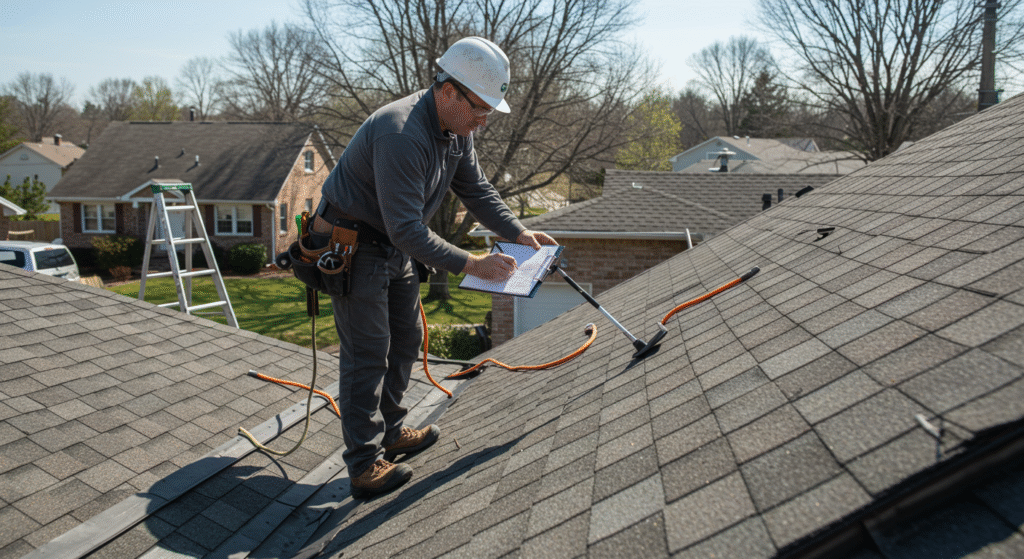
Final Thoughts on Keeping Your Roof in Top Shape
Your roof quietly protects your home 24/7 — but it needs your attention to keep doing its job. A smart, consistent roofing maintenance checklist gives you the power to:
- Catch small problems before they turn expensive
- Extend your roof’s life
- Protect your investment
- Improve energy performance
- Boost your home’s resale value
Regular inspections, cleaning, and repairs go a long way in keeping your roof durable, dry, and dependable. Whether you’re a hands-on homeowner or prefer to leave it to the pros, what matters most is that maintenance gets done.
✅ Call the Roofing Experts Today!
Don’t wait until you notice a leak or water stain. Let Richard Miller Construction LLC help you protect your home with professional inspections, maintenance plans, and repair services.
📞 Contact us today to schedule your annual roof inspection and get peace of mind that your home is in good hands — rain or shine.

